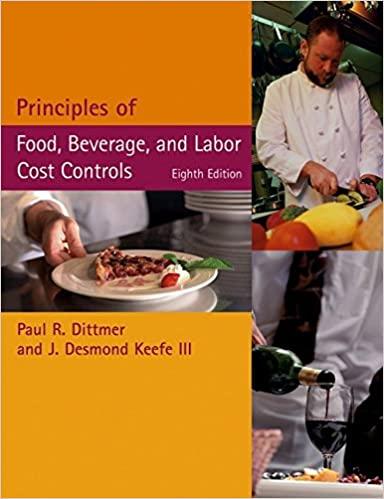Ag-Coop is a large farm cooperative with a number of agriculture-related manufacturing and service divisions. As a cooperative, it pays no federal income taxes. The company owns a fertilizer plant that processes and mixes petrochemical compounds into three brands of agricultural fertilizer: greenup, maintane, and winterizer. The three brands differ with respect to selling price and the proportional content of basic chemicals. Ag-Coop's Fertilizer Manufacturing Division transfers the completed product to the cooperative's Retail Sales Division at a price based on the cost of each type of fertilizer plus a markup. The Manufacturing Division is completely automated so that the only costs it incurs are the costs of the petrochemical feedstocks plus overhead that is considered fixed. The primary feedstock costs $1.60 per pound. Each 100 pounds of feedstock can produce either of the following mixtures of fertilizer. Output Schedules (in pounds) Greenup Maintane Winterizer A 40 40 20 B 50 30 20 Production is limited to the 720,000 kilowatt-hours monthly capacity of the dehydrator. Due to different chemical makeup, each brand of fertilizer requires different dehydrator use. Dehydrator usage in kilowatt-hours per pound of product follows. Product Greenup Maintane Winterizer Kilowatt-Hour Usage per Pound 38 29 46 Monthly fixed costs are $84,000. The company currently is producing according to output schedule A. Joint production Monthly fixed costs are $84,000. The company currently is producing according to output schedule A. Joint production costs including fixed overhead are allocated to each product on the basis of weight. The fertilizer is packed into 100-pound bags for sale in the cooperative's retail stores. The sales price for each product charged by the cooperative's Retail Sales Division follows. Greenup Maintane Winterizer Sales Price per Pound $11.50 10.00 11.40 Selling expenses are 20 percent of the sales price. The Retail Sales Division manager has complained that the prices charged by the Manufacturing Division are excessive and that he would prefer to purchase from another supplier. The Manufacturing Division manager argues that the processing mix was determined based on a careful analysis of the costs of each product compared to the prices charged by the Retail Sales Division Required: a. Assume that joint production costs including fixed overhead are allocated to each product on the basis of weight. What is the cost per pound of each product, including fixed overhead and the feedstock cost of $1.60 per pound, given the current production schedule? b. Assume that joint production costs including fixed overhead are allocated to each product on the basis of net realizable value if sold through the cooperative's Retail Sales Division. What is the allocated cost per pound of each product, given the current production schedule? c. Assume that joint production costs including fixed overhead are allocated to each product on the basis of weight. Calculate the operating profit under both Schedule A and Schedule B. Complete this question by entering your answers in the tabs Required A Required B Required C Assume that joint production costs including fixed overhead are alloca cost per pound of each product, including fixed overhead and the feec production schedule? (Do not round intermediate calculations. Round Allocated cost per pound Required A R Complete this question by entering your answers in the tabs below eBook Print Required A Required B Required C erences Assume that joint production costs including fixed overhead are allocated to if sold through the cooperative's Retail Sales Division. What is the allocated production schedule? (Do not round Intermediate calculations. Round your Greenup Maintane Allocated Cost per pound per pound per pound Winterizer











